Introduction
In a world where data is the new currency, the ability to transform raw information into actionable insights is paramount for organizations striving for operational excellence. Semantic models in Power BI emerge as a transformative solution, bridging the gap between complex data structures and user-friendly analytics. By defining clear relationships among data entities, these models not only streamline reporting processes but also empower users to harness the full potential of their data.
As organizations grapple with challenges such as time-consuming report creation and data inconsistencies, understanding and implementing semantic models becomes essential for driving informed decision-making and enhancing efficiency. This article delves into the myriad benefits of semantic models, practical strategies for building and managing them, and best practices for integration, ultimately equipping organizations with the tools necessary to thrive in today’s data-driven landscape.
Understanding Semantic Models in Power BI
Semantic models in Power BI serve as a crucial element in information management, acting as organized structures that outline relationships between various information entities. They operate as a mediator layer, simplifying complex structures and enabling users to interact with their information more intuitively. By arranging information into clear hierarchies and significant connections, conceptual frameworks greatly improve the effectiveness of analysis and reporting processes, thus tackling prevalent issues encountered by operations directors, including the absence of actionable guidance.
This leads to extracting valuable insights with greater ease, ultimately reducing the time spent on report creation. As Ibarrau, an informed Super User, observes, ‘You might be able to obtain that information but with the BI Rest API only… in that manner, you could gain insights into the usage for creating new reports.’ This viewpoint emphasizes the essential significance of semantic models in Power BI for revealing the complete capabilities of BI, as they convert unprocessed data into practical insights that promote informed decision-making.
Furthermore, our Power BI services include a 3-Day Sprint designed to quickly create professionally designed reports, alongside the General Management App that facilitates comprehensive management and smart reviews. Furthermore, generating structured representations from Excel workbooks and CSV files automatically produces a framework with imported tables, simplifying the framework creation process. Case studies investigating usage metrics in national/regional clouds demonstrate how conceptual frameworks function within compliance structures while improving analytical capabilities.
Additionally, establishing a strong governance approach guarantees information consistency and reliability, further enhancing the efficiency of conceptual frameworks. Comprehending and applying semantic models in Power BI efficiently is crucial for any organization aiming to enhance its analytical capabilities and surpass obsolete systems through intelligent automation.
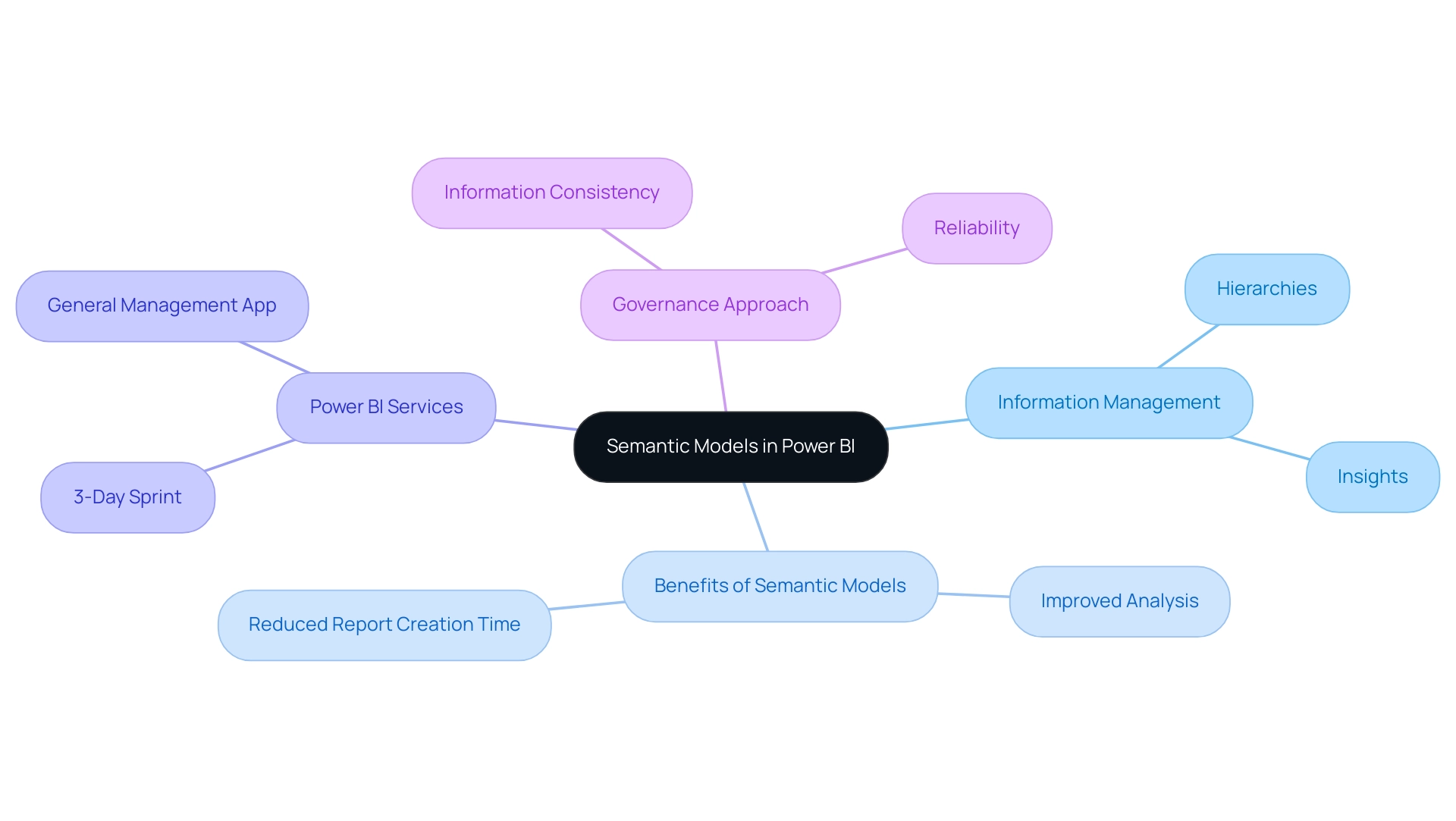
Benefits of Implementing Semantic Models in Power BI
Implementing semantic models in Power BI unlocks a plethora of advantages that significantly enhance organizational efficiency and decision-making processes. By tackling challenges such as time-consuming report creation, inconsistencies in information, and the absence of actionable guidance, these frameworks establish a clear structure and define relationships among information. This ensures that users across various departments have access to uniform information interpretations, minimizing discrepancies and fostering a cohesive understanding of business metrics.
Furthermore, conceptual frameworks enable users with sophisticated analytical functions, allowing features such as natural language inquiries. As Jason Himmelstein aptly notes,
Users can now update their visuals in real time, interact with their information through BI’s standard features such as filtering, cross-highlighting, and tooltips.
This interactivity not only streamlines the reporting process but also accelerates insight generation, allowing for more informed decision-making.
To effectively set up their environment for monitoring and enhancing the quality of semantic models in Power BI, organizations can follow the deployment steps outlined in the BPA case study, which includes:
- Creating a new Lakehouse
- Establishing a Data Engineering Environment
- Integrating the semantic-link-labs library
Moreover, incorporating Robotic Process Automation (RPA) can greatly improve operational efficiency by automating manual workflows, tackling the challenges of report creation and information governance, and enabling teams to concentrate on strategic, value-adding tasks. With over 200 hours of learning available, users can deepen their understanding of these frameworks and their implementation.
The inclusion of dynamic subscriptions in BI also improves the efficiency of these frameworks, enabling prompt updates and enhanced information management. As organizations adopt these frameworks alongside RPA, they position themselves to drive business success through enhanced accessibility and deeper analytical capabilities.
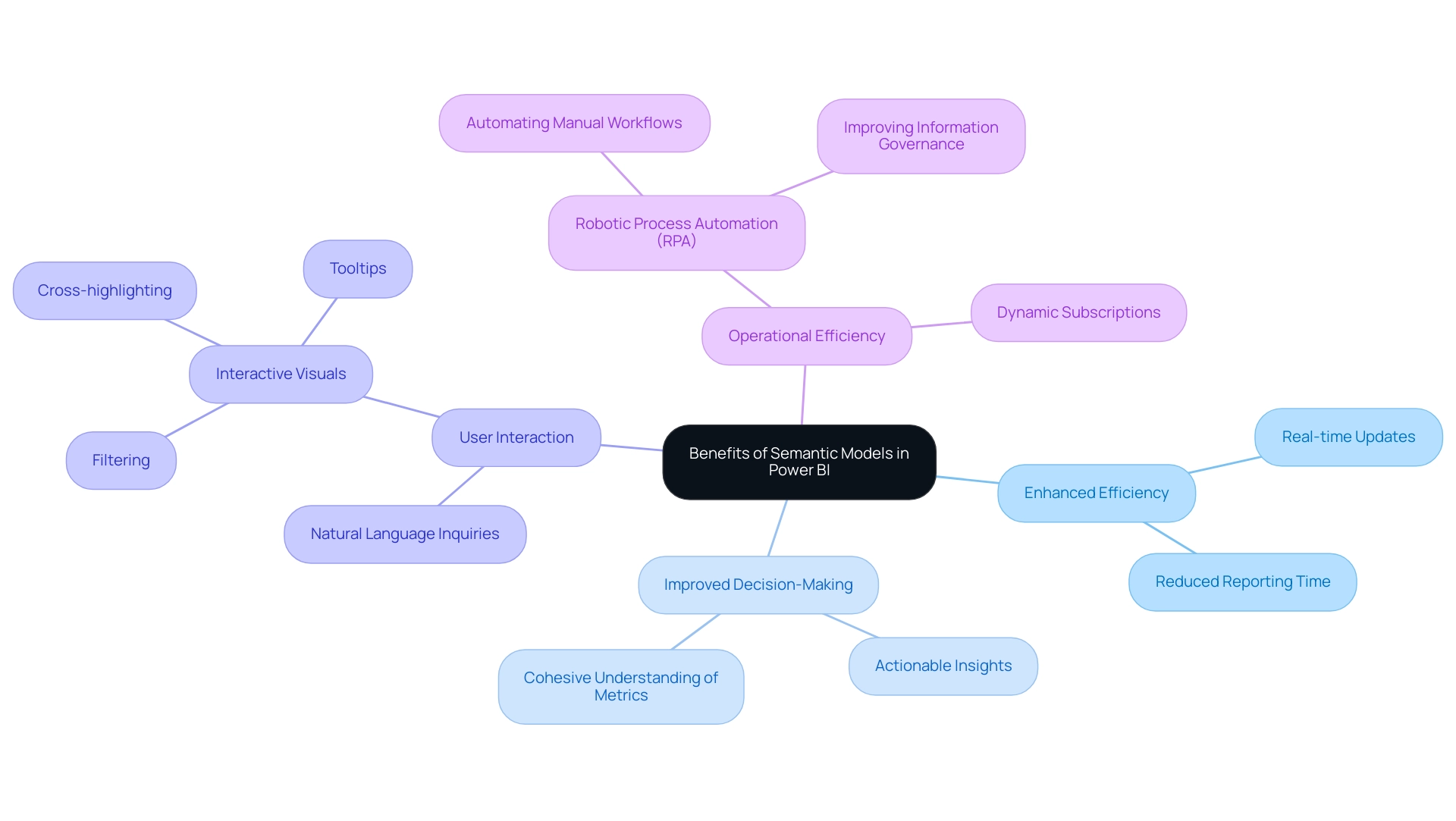
Building and Managing Power BI Semantic Models
Constructing and overseeing semantic models in Power BI is a strategic process that enables organizations to utilize their information effectively. In today’s data-rich environment, the importance of Business Intelligence and RPA in driving data-driven insights cannot be overstated, particularly as many businesses struggle with a lack of actionable insights. A practical example of this can be seen in the tutorial on building a machine learning model in Power BI, where the first crucial step involves identifying and connecting to the suitable information sources.
This step is essential for ensuring that the information is both clean and well-structured, addressing challenges like inconsistencies that can arise in report creation. Following this, defining the relationships between various entities creates a logical framework that accurately reflects how the information interacts. In the case study titled ‘Tracking Training Status,’ the training procedure for the machine learning system involves monitoring the training status through the BI interface, indicating whether the system is queued, under training, or has been successfully trained.
Incorporating calculated columns and measures is vital, as these elements provide valuable insights that drive decision-making. Furthermore, consistent upkeep of the semantic models in Power BI must not be neglected; regularly examining and refreshing the models guarantees that they adjust to any alterations in information sources or changing business requirements. Our Power BI services, including the 3-Day Power BI Sprint, offer organizations rapid pathways to create professionally designed reports while the General Management App ensures comprehensive management and smart reviews.
By leveraging AI solutions like Small Language Models, which enhance information quality through efficient analysis, and GenAI Workshops that provide hands-on training, organizations can address the challenges of poor master information quality. As Ayushi Trivedi, Technical Content Editor at Analytics Vidhya, states, ‘I love building the bridge between the technology and the learner,’ emphasizing the importance of connecting technology with practical applications. By following these steps and utilizing these AI solutions, organizations can build strong conceptual frameworks that greatly improve their analytical capabilities, paving the way for informed strategic decisions.
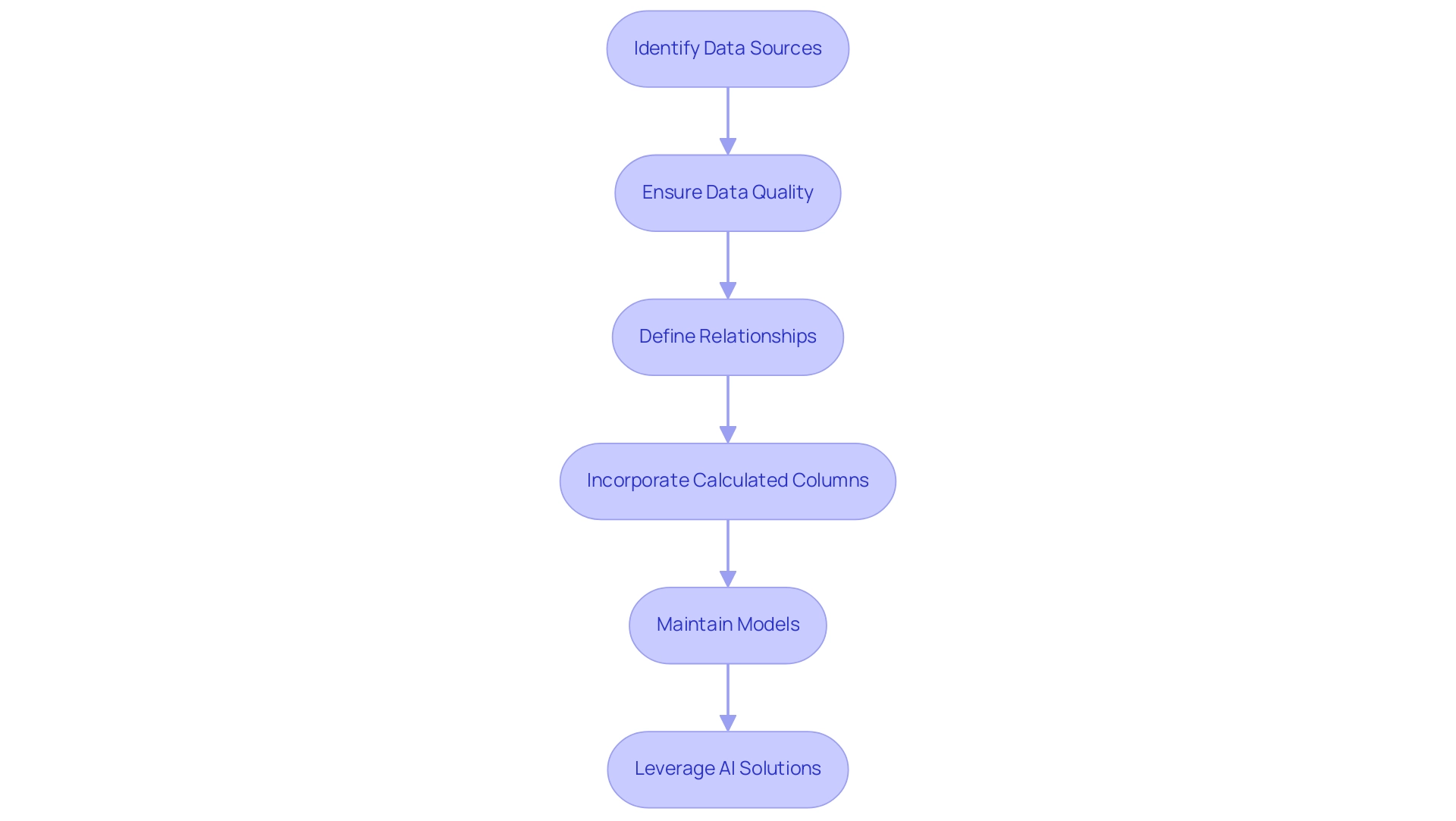
Integrating Semantic Models with Data Sources and BI Tools
Combining meaningful frameworks with a varied array of information sources and business intelligence tools is essential for enhancing the capabilities of BI. In today’s data-rich environment, the ability to unlock actionable insights through Business Intelligence is essential for maintaining a competitive edge. Users can connect the BI tool to numerous information sources, including databases, Excel spreadsheets, and various cloud services, ensuring that semantic models are consistently updated with the most current information available.
Notably, the Drill Down Combo Bar PRO can visualize up to 25 series, showcasing BI’s robust analytical capabilities. The combination of BI tools with other business intelligence solutions greatly improves reporting abilities and user experience, tackling issues like time-consuming report generation and inconsistencies in information. This seamless connection facilitates comprehensive analysis and visualization, empowering organizations to make informed decisions grounded in a holistic view of their information landscape.
Recent advancements, such as the connected table feature in the BI Datasets Add-in for Excel, streamline the incorporation of BI information into Excel workbooks, enhancing this integration journey. Moreover, the Get Information experience in Report Builder enables users to efficiently create reports from over 100 sources, enhancing performance and usability. As a result, users can monitor their business and receive quick answers through rich dashboards accessible on any device.
Furthermore, utilizing RPA solutions such as EMMA RPA and Automate can automate repetitive tasks, further enhancing operational efficiency and allowing teams to concentrate on strategic initiatives. As Arun Ulag noted concerning the upcoming Microsoft Fabric Conference 2025 in Las Vegas, the advancements in BI tool integration are poised to transform how businesses manage and analyze their information, further promoting growth and operational efficiency. To learn more about how these solutions can benefit your operations, book a free consultation today.
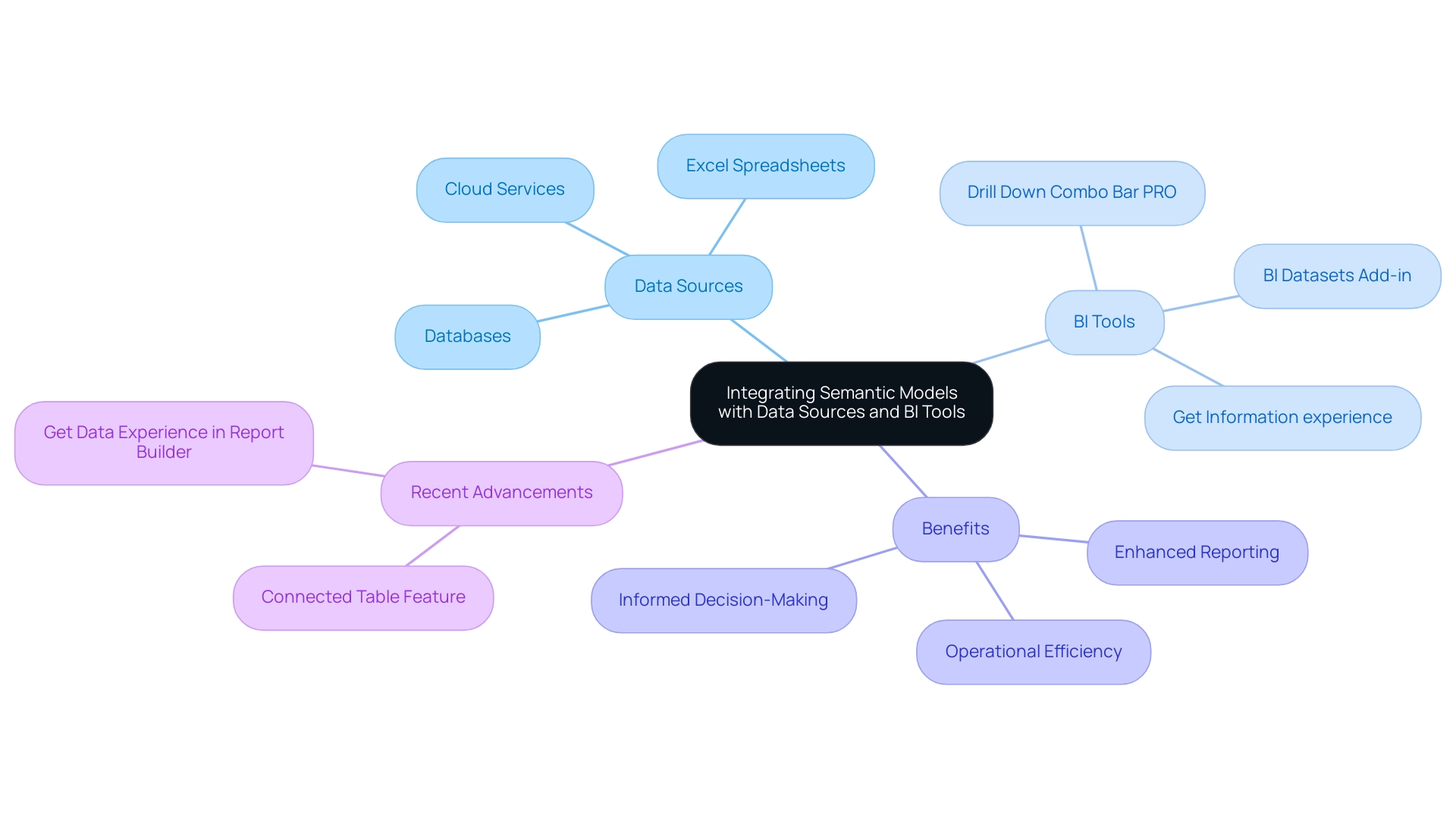
Challenges and Best Practices for Power BI Semantic Models
Navigating the complexities of semantic models in Power BI can present significant challenges, such as information quality issues, user resistance to change, and intricate model designs. To effectively tackle these hurdles, organizations must prioritize robust data governance, ensuring that all data remains accurate and current. Our 3-Day Power BI Sprint is designed to help you create professional reports quickly while addressing these challenges, allowing you to leverage insights effectively for impactful decisions.
A key feature of this service is the template bonus, providing you with a professionally designed report that can be reused for future projects. As Amine Jerbi aptly noted, as semantic frameworks grow in size after refreshes, if the capacity of the workspace is not increased, performance slowdowns can occur. In such cases, organizations can utilize incremental refresh as a viable solution.
Thus, it’s crucial to simplify models by removing unnecessary columns, tables, or complex calculations to enhance refresh times. The focus on cleaning datasets is further highlighted by the recent BI Dev Dash case study, where contestants demonstrated the impact of this practice. Furthermore, fostering a culture of teamwork and providing extensive training can greatly reduce resistance to new tools and processes, aligning with our commitment to expert education in our BI services.
Best practices for developing effective semantic models in Power BI begin with:
- A thorough understanding of business requirements
- Meticulous documentation
- Consistent reviews and refinements of the model
These proactive measures not only address existing challenges but also empower organizations to optimize their BI implementations, ultimately driving greater efficiency and productivity. The Power BI Dev Dash case study exemplifies this approach, highlighting how Angelica’s strong technical skills contrasted with Allison’s focus on polished presentation, showcasing the importance of both technical proficiency and design in achieving success.
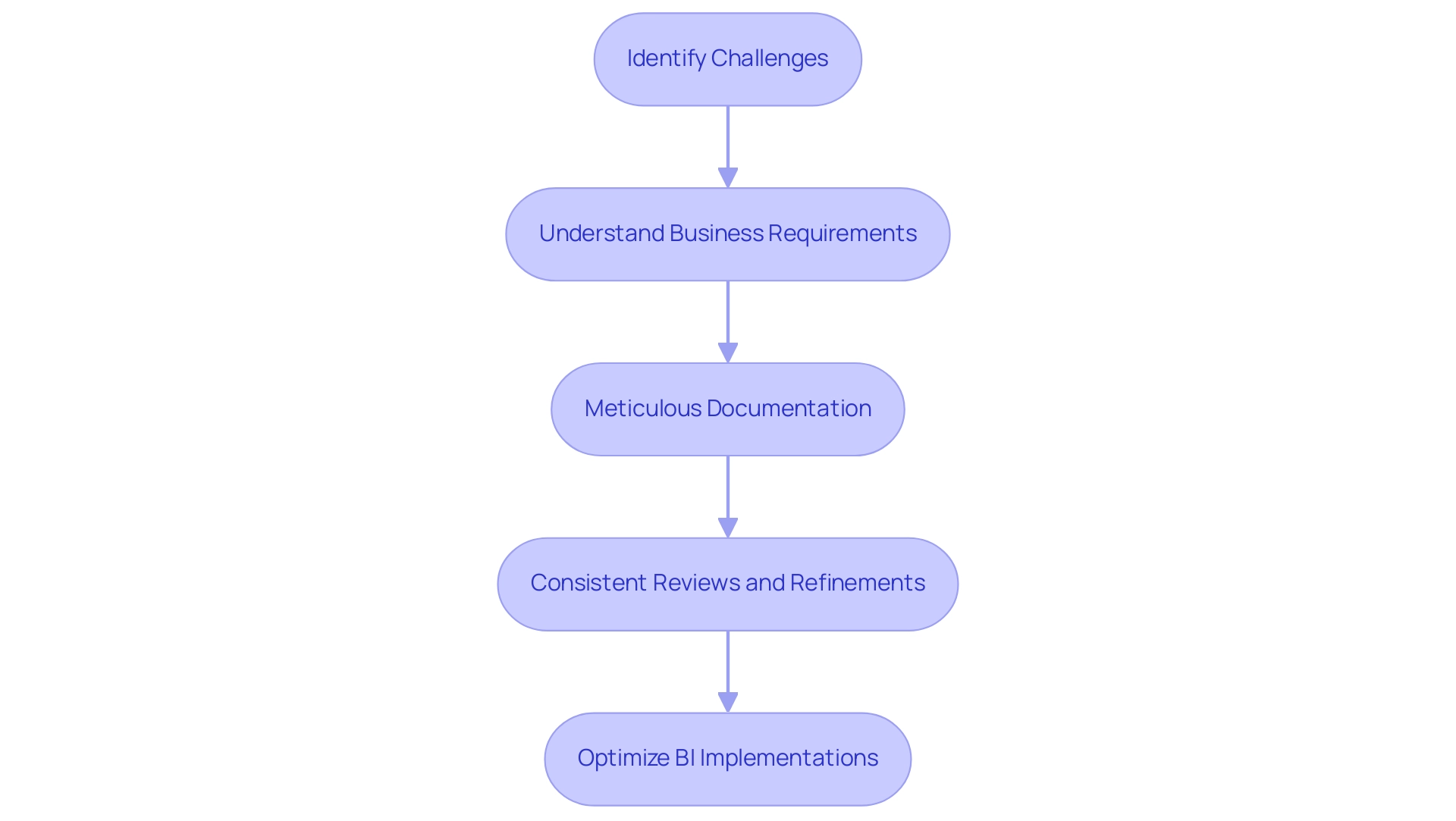
Conclusion
Implementing semantic models in Power BI is not just a strategic initiative; it is a crucial step toward operational excellence in a data-driven world. By establishing clear relationships among data entities, these models streamline the reporting process and minimize inconsistencies, enabling users across all departments to make informed decisions with confidence. The insights gleaned from semantic models empower organizations to enhance their analytics capabilities, ultimately transforming raw data into actionable information that drives business success.
Moreover, the integration of semantic models with various data sources and BI tools amplifies their effectiveness, allowing organizations to leverage real-time data and advanced analytics features. This seamless connectivity not only enhances the user experience but also fosters a culture of collaboration and innovation within the organization. By adopting best practices in building and managing these models, companies can navigate challenges such as data quality issues and user resistance, positioning themselves for sustained growth and competitive advantage.
In conclusion, embracing semantic models in Power BI is essential for organizations aiming to thrive in today’s complex data landscape. By investing in these structured frameworks and prioritizing data governance, organizations can unlock the full potential of their data, driving efficiency, enhancing decision-making, and ultimately achieving operational excellence. The journey toward effective data management starts now—equip your organization with the tools and strategies to harness the power of semantic models and pave the way for future success.

